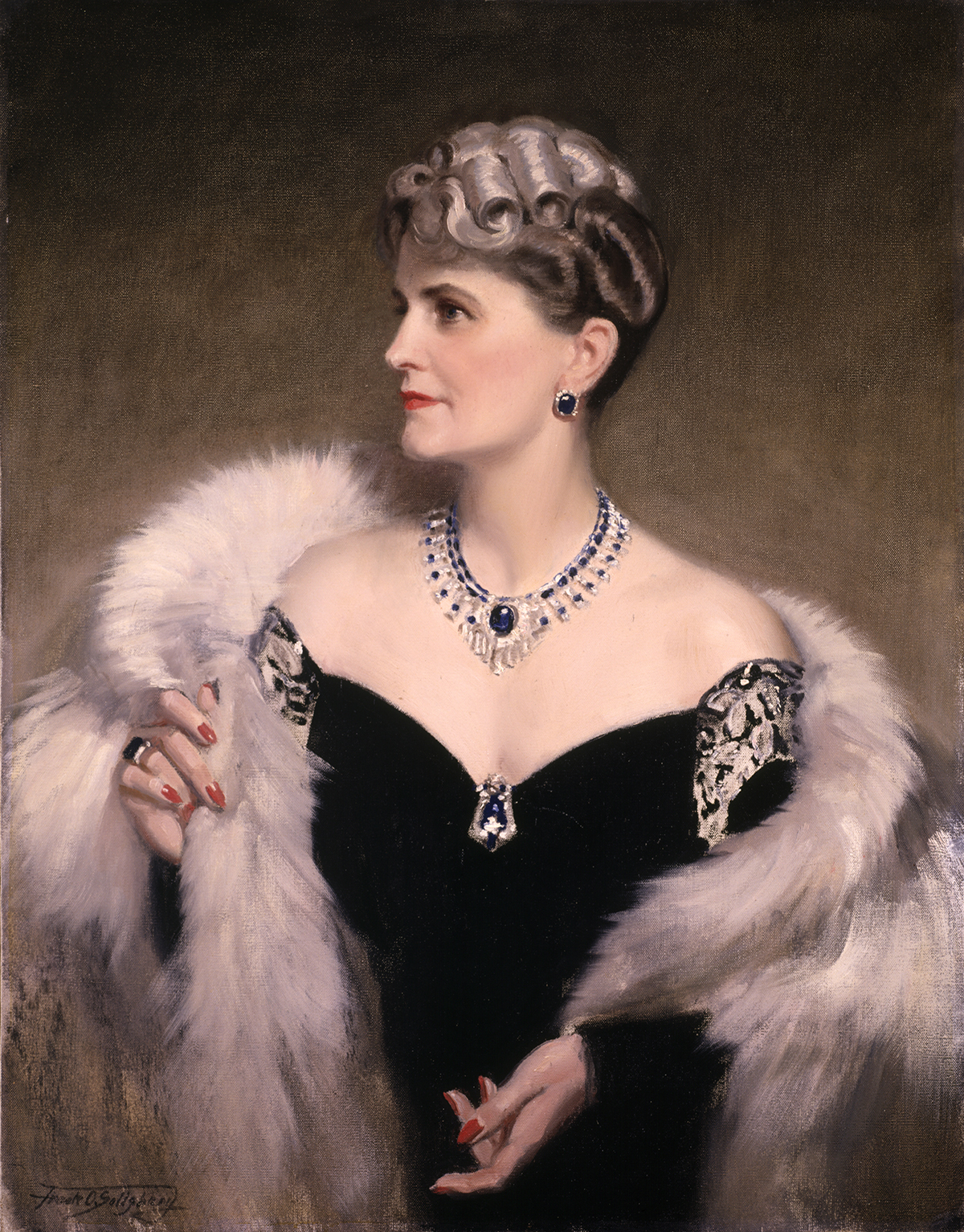“Clothes make the man,” Mark Twain once said, elaborating on Shakespeare. “Naked people have little or no influence on society.”
Clothes, of course, make the woman, too. And few women in history wore clothes like Marjorie Merriweather Post, whose sense of style had an enormous impact on 20th-century society.
Howard Vincent Kurtz is a professor of theater at George Mason University, where he teaches costume design, fashion history and pattern making. For the past 20 years, he has been a curator of costumes and textiles at the Hillwood Estate, Museum and Gardens in northwest Washington, D.C., the Georgian-style mansion that was Post’s primary residence from the 1950s until her death in 1973 at 86.
At 3:30 p.m. Friday in the Hall of Christ, Kurtz will present “In Her Own Style: The Fashions of Marjorie Merriweather Post” as part of the Oliver Archives Heritage Lecture Series.
“Clothing is our identity; it’s how people relate to us,” Kurtz said. “We can know a lot about people from what they wear, standing in a grocery store line. Marjorie was always in the social eye, so she needed to dress accordingly. Her clothes were a representation of her identity.”
Post filled Hillwood with her vast collection of 18th- century French furniture and decorations and one of the largest collections of Czarist Russian art outside the Soviet Union, including Fabergé eggs. She also kept her clothing and accessories there, virtually everything she had acquired and worn since she was 16 years old, complete with notes on the objects, Kurtz said. In 1997, he was hired by Hillwood to catalogue 70 years’ worth of Post’s fashion. He has worked part-time there ever since. In 2015, he published Ingenue to Icon: 70 Years of Fashion from the Collection of Marjorie Merriweather Post, and was curator of four exhibits based on that theme. The book, which pictures and describes some 175 garments and more than 400 accessories is as much a biography of Post as it is a compendium of her style.

“It not only represents Marjorie’s style, but the changing styles of women in America from the turn of the century until the 1970s, and, really, representing the changes in society,” Kurtz said.
In researching and cataloging the collection, Kurtz became close with Post’s daughter, the actress Dina Merrill, who shared memories and stories of her famous mother with him for 10 years.
“She was a very rich woman, but she had a lot of sentimentality,” Kurtz said of Post. “She was very kind.”
And while Post never visited Chautauqua Institution, she set a tone of elegance for wealthy women throughout the first 60-plus years of the 20th century, a tone reflected in the fashion choices of Chautauqua’s more stylish matrons and ingenues.
Post bequeathed Hillwood to the U.S. government in the late 1960s, but the Smithsonian Institution could not afford its upkeep and took a collection of its furniture instead. Post also donated her Palm Beach, Florida, estate — Mar-a-Lago — that she built in the 1920s to the government at about the same time, with the idea that it would become a “Winter White House.” Again, the government could not afford it, and the 126-room, 62,500-square-foot mansion was sold in 1985 to Donald Trump, who now uses it as an official presidential residence. She also owned a compound outside Saranac Lake in the Adirondacks.
“It was always 72 degrees in Marjorie’s life,” Kurtz said. “She spent her summers in the Adirondacks, her winters in Palm Beach and the spring and fall in Washington.”
Post was born in Springfield, Illinois, in 1887. She was the only child of Charles William Post, a farm machinery salesman, and his wife, Ella Letitia Merriweather Post. C.W. Post, as he was known, moved to Battle Creek, Michigan, to try to cure his failing health through diet. In 1893, he mixed wheat, molasses and bran together and called the cereal Postum, according to The New York Times in its full-page obituary of Marjorie Merriweather Post. Along with Grape Nuts and Post Toasties, Postum became the foundation of a fortune built on cereal.
Marjorie Post idolized her father, who began taking her to board meetings and teaching her the business as a young girl. At 17, she knew pretty much all there was to know about running the company, the Times reported. She also began traveling to Europe with her father in her teens, and became enamored with the fashion scene in turn-of-the-century France and England, forming lasting relationships with designers, Kurtz said.
For the next 70 years, Post lived a vibrant life as a successful businesswoman and internationally known fashion icon, reflecting her times in her style and setting trends from the Edwardian era until the late 1960s, Kurtz said.
At 18, she married Edward Close, a New York lawyer, who indulged her passion for European travel. In 1919, she divorced him and married Edward F. Hutton, a wealthy stockbroker, who helped her expand the Post empire by buying Jell-O, Maxwell House Coffee and other brands. She assumed control of the company at age 27, and bought out Birdseye frozen foods two years later, creating the monolith General Foods. While excelling in business, she came to embody the image of Café Society in the 1920s and ’30s, giving lavish parties and appearing regularly in the society pages of newspapers.
In the late 1930s, she divorced Hutton and married Joseph Davies. She moved with him to Moscow, where he served as American ambassador to the Soviet Union and, later, as ambassador to Belgium. It was then that Post began collecting troves of art and also, according to Kurtz, setting trends by dressing in exclusively American fashions, which she helped popularize worldwide.
In the 1940s and ’50s, Post turned to more mature styles, working with a few well-known designers, especially Oldric Royce, a Czech emigre, who made most of her clothing from the 1940s until her death.
“They became great friends,” Kurtz said. “He really knew her style, and he understood older women. He designed clothes for the wives of presidents and Hollywood and Broadway stars.”
When Post died, something essential in fashion died, too, Kurtz said.
“Fashion and style have remained stagnant since the late ’60s,” he said. “There has been nothing really new or inventive.
“When she passed, it was the end of a gilded age, the end of an era,” Kurtz added. “It really was.





